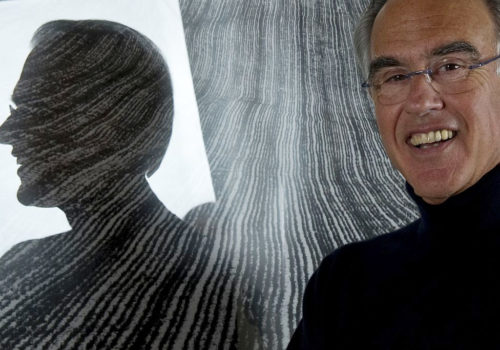He used to be a graphic art and prints collector, then he focused his interest and passion on photography. Afterwards Fabio Castelli conceived and directed MIA Milan Art Fair. It happened four years ago and now the 2014 edition is on. We met him in Milan, in his office whose walls are covered by fine art photos and books, while people around are still working on the Fair organization. Our interview with him opens with some reflections on digital photography.
“Digital photography somehow puzzles the purists in photography: there is a kind of reticence, of unspoken prejudice towards it, as they think photography must correspond to “drawing with light”, which does not always happen especially when the transition from photography to image is taking place. It is a historic transition, because today images can be produced also capturing something graphic from, for example, the web and working on it: that’s creating an image that never saw the light. Photography is an effective means, with the same dignity as others, a language which an artist can use to express his own creativity as well as the expressive capabilities of contemporary art. After a period of settlement, today the change to digital has been metabolized, thanks to the digital artists who use different “things” for their creative works, including photos”.
This leads to another “classic” question about the relationship between art and photography.
“Photography was cleared as an art form in 1972 with Franco Vaccari and his Esposizione in tempo reale at the 36th Biennale di Venezia: it was a strong mark for the acceptance of photography within the art field. Nowadays its relevance is well acknowledged: almost all contemporary art collectors own at least one photo, because it is a real expression of contemporary art and it expresses a kind of koiné, for images use a common linguistic code that can be understood by most. We find fine art photography at the beginning as well at the end of many collections, it is an affordable gateway to start but it can also become the center of a specific interest: so this art form is essential to continue and complete a collection”.
Why did you decided to create MIA Fair, specifically dedicated to fine art collecting?
“I thought of something new for the Italian photographic world, especially focusing on fine art photography. In doing this there has been a rational approach with a needs analysis. I think we responded to this if we look at MIA success in terms of audience and interest from the world of collectors, as well as means to give visibility to fine art photography. On the other hand there was an irrational side, because if I’d stopped to rationality, I would have never given life to this exciting adventure, since we were going to operate in a market not yet settled, not to mention that the event began during the 2011 crisis. And then there was something more, the enthusiasm and love that are critical elements to succeed today. However, this was an interesting period because there was and still goes on a strong interest both in “classic” photography and in artists who “also” use photography for their creativity, with a confluence of interests which reflects similar interest on the part of the world of collecting. Furthermore photography allows an easier access to art works either from the linguistic point of view or from the economic one. Collecting photography, indeed, often allows access to this passion and the chance to remain within the art world for almost everyone”.
Fabio Castelli, continues his research on contemporary art with photography. In fact, after having collected graphic arts, an art that cannot be expressed through a single work or a unique masterpiece, he fell in love with fine art photography, which shows similar features.
“As these photographic works are thought to go on the market, they need to meet specific characteristics, too, the collector needs certainty of the rules, he must feel “protected”.
MIA Fair is part of the Milano Photofestival 2014: this set of events related to photography gives rise to a strong synergy effect which manages to create a “culture” of the image.
“Culture is essential in this extraordinary world of the photographic image, that is expressed through various typologies, each of which has a different place on the market, so it is necessary to know every different facets of each ones. This is one of the features of Mia, which offers the public both cultural supports (such as, for example, workshops with collectors) and gives useful information for informed fine art collecting”.
The Fair is going international not only for its exhibitors and its visitors but also for its venues: it will open in Singapore on the 24th to 26th of October. Why did you choose this eastern location?
“MIA Fair will be in Singapore (showing both fine art photography and design) because we are trying to open the eastern markets to exhibitors who have given us their trust so far. It is a country which benefits of particularly positive conditions, with an important international market in this field. It is also an interesting geographical area quite opened to Western culture”.
FESTIVAL
MIA Fair 2014
From 23rd to 25th May 2014
Superstudio Più
Via Tortona 27
Milan, Italy
















